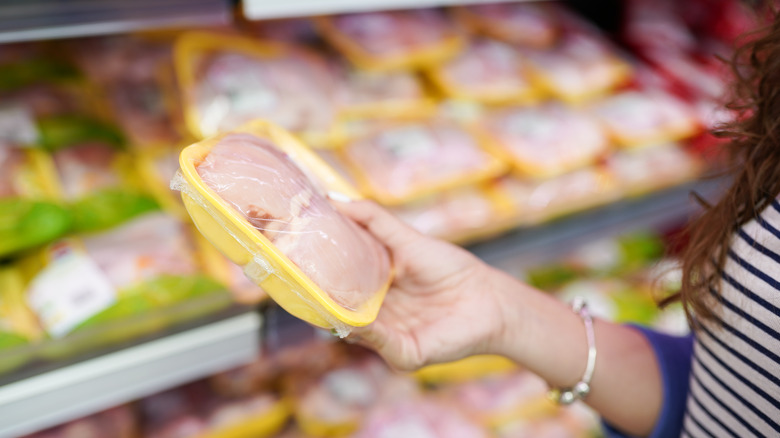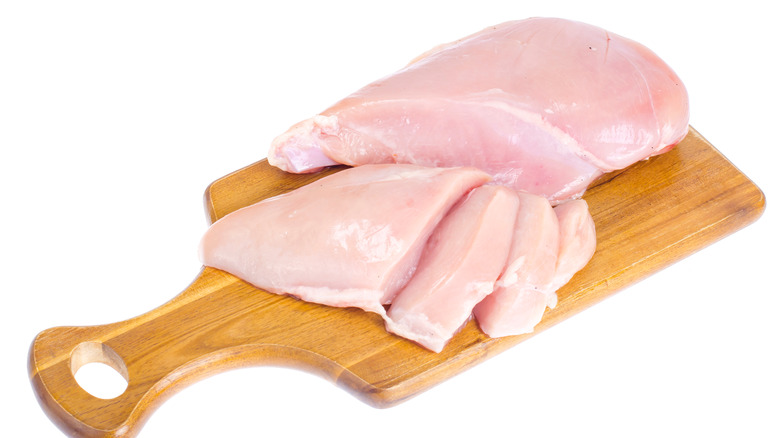What Does It Mean When Grocery Store Chicken Is Air-Chilled?
You know those pink juices you spy through the plastic wrap when you're in the grocery store looking at pre-packaged chicken? They're not only unnecessary, they may even be unhealthy. Contrary to common perception, those juices are not a natural occurrence. Instead, they're the result of water chilling, the most common method of cooling freshly slaughtered chicken currently used in the United States (via the journal Microbial Ecology). According to Organic Authority, most U.S. processing plants immerse chicken in tubs of ice-cold water immediately after slaughter. As the carcasses chill to the U.S.Department of Agriculture (USDA)-mandated temperature of 40 degrees Fahrenheit (via D'Artagnan), they absorb a significant amount of water which, according to the Organic Authority, can account for up to 12% of its total market weight.
That's annoying in and of itself, but there's more. Not only does immersion chilling in communal tubs artificially inflate the weight of the meat, but it may also increase the risk of spreading bacteria from one bird to another. Plus, the added water dilutes the flavor of the bird and may alter the texture of the meat (via The Kitchn). But there's an alternative.
Pound for pound?
While immersion chilling continues to sway in the United States, air chilling is becoming more common. Employed as the preferred chicken chilling method in Europe since the 1960s (via D'Artagnan), air chilling is a multi-step process. According to Organic Authority, freshly slaughtered and feathered chickens are suspended individually from a track and passed through a series of cooling chambers, lowering their temperature gradually over a period of hours. The process has a number of benefits, including a lower risk of cross-contamination because the birds are processed individually as opposed to being dunked in a communal tub of cold water. Air chilling also avoids water absorption, so the meat sells at its actual — not pumped up — weight.
Smart Chicken posits it also tastes better because the water absorbed by the chicken during immersion cooling purges when it's packaged — that's the pink liquid you see — brings with it some of the natural flavor-enhancing juices. There's a catch, though. Because air cooling is a more time-consuming process, the price per pound is usually slightly higher than water-cooled chicken. On the other hand, you're not paying for the weight of processing liquids, so it may be a toss up.

